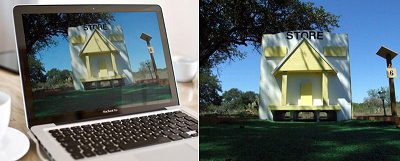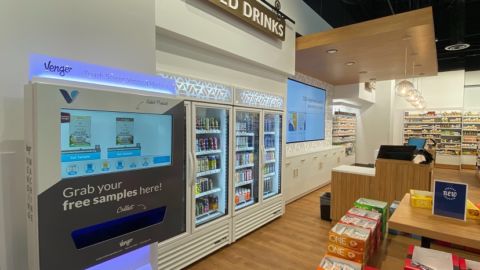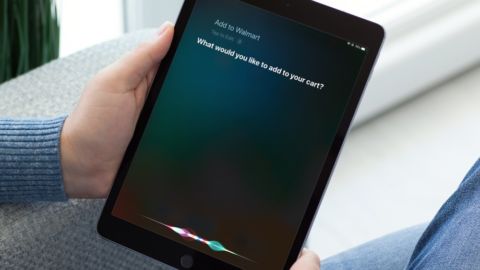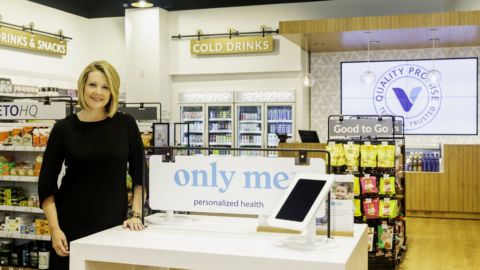Recent headlines in both the trade and mainstream press have been full of variations on the same theme: Brick-And-Mortar Retail Is Dying! And these headlines are not just clickbait. There were more retail bankruptcies in the first four months of 2017 than in all of 2016. A rash of store closures also are making the news, both by some of the largest retailers (Macy’s, Sears, Payless Shoe Source) and smaller players including hhgregg and The Limited. An NBC News report noted that more than 100,000 retail workers have lost their jobs since October 2016.
A frequent counter-argument to these stories goes like this: If brick-and-mortar retail is such a terrible business model, why are so many online retailers rushing to open physical stores? (A partial list includes Amazon, Warby Parker, Bonobos, Minted and Casper.) It’s certainly a valid question — but the answer is more complicated than it might appear at first glance.
The smartest online retailers are “getting physical” in ways that combine the customer identification and analytical capabilities of e-Commerce with the advantages of face-to-face retailing. These retailers are using their brick-and-mortar stores to maximize several key consumer demands, including shoppers’ desire for:
• Experience: Including more personalized experiences and curated product assortments;
• Mobile: Featuring tight integration with consumers’ own mobile devices; and
• Convenience: Embracing today’s digitally time-starved customer base.
Savvy online retailers are taking advantage of store-based retailing to get to know shoppers on a more personal level, and to fine-tune product selection and omnichannel business strategy. “Even with all the data they collect online, there’s a lot these retailers can learn from moving into the physical world,” said Jean Jacullo, Associate Professor at Fashion Institute of Technology (FIT) in an interview with Retail TouchPoints. “If someone rejects a product online, for example, the retailer often doesn’t know the reason. In a physical store you could discover that a garment isn’t fitting right when customers try it on, or that it simply doesn’t show well on a hanger. With good customer service in the mix, you can learn a lot about your products.”
Other industry experts agree: “Retailers learn much about their customers just by watching them shop, and interacting with the space and products,” noted Vicki Cantrell, a consultant and former National Retail Federation (NRF) executive in an interview with Retail TouchPoints. “This is all new perspective and information for an online retailer. From a market research standpoint, a store can pay for itself.”
Enhancing Personalization With Curation
Retailers need to do more than simply collect data; they also need to apply it to customer interactions at all touch points. “Retailers in any format should emphasize personalization and individual curation — building suggestions, hints and recommendations while reducing time, money and the potential for buyer’s remorse,” said Sara Bamossy, Chief Strategy Officer for the Pitch advertising agency. “It’s important to understand how your customer prefers to interact with your brand in person, on e-Commerce and on social. For example, Pitch made some changes to the CTAs (Calls To Action) and social content for The Coffee Bean & Tea Leaf and increased conversion from our owned channels to e-Commerce purchases by over 500%.”
Strategies will vary depending on a retailer’s business model and relationship with its customers. “Luxury retailers like Neiman Marcus might choose to use tech partners like ShopRunner to remember preferences and enable one-step mobile checkout,” said Bamossy in an interview with Retail TouchPoints. “Brands like Trunk Club and Stitch Fix use a combination of human stylists and prior purchase data to exponentially increase the profitability of purchase over time. These brands have successfully created the sensation of a store that carries only the perfect things for you.”
Online retailers may have a head start in the personalization race, but brick-and-mortar retailers should not just throw in the towel. “Online has all the customer data right from the beginning of their business, and when they can leverage that in the store, they have a real advantage,” said Jacullo. “But if legacy retailers have been paying attention, they also know their customer quite well. In a store, now you can enable WiFi and send a customer a push notification. If you’re really good, you will recognize them when they come in the door: ‘Oh Sylvia, we know you’re here, we got a new shipment of Rag & Bone that you may want to see.’”
Don’t Fight Mobile — Use It
Many legacy retailers have had a wary relationship with mobile due to a lingering fear of “showrooming.” Newer retailers acknowledge mobile’s power and do everything they can to unite the in-person and mobile experience. One example is New Stand, a chain of 10 convenience stores launched in late 2015, located at three New York City (NYC) transit hubs and seven commuter ferry boats.
“I believe deeply in the role that brick-and-mortar plays today,” said Andrew Deitchman, CEO of New Stand. “While more and more people are ordering things from Alexa, those same people still leave their houses every day. I know at New Stand we’re just trying to engage with them as part of their routines and find ways to help and inspire them. We do that via every means at our disposal — our shops, our people, our content, our app, our social, our brand partnerships — all pointed towards our mission, which is ‘Day Improvement.’”
In addition to convenience items that shoppers can grab on the go, “We also make it convenient to discover new products and brands by rotating them among all the essentials,” said Deitchman in an interview with Retail TouchPoints. “It’s also convenient to have a great app that makes purchases super fast. That same app also turns you on to new music and other content, and lets you earn loyalty points for spending time with that content, not just spending money in the store.”
New Stand already is establishing partnerships, allowing the NYC Ferry riders to validate their monthly passes in the app in order to earn points for shopping in New Stand stores. “We’re encouraging our consumers to spend time with us by connecting what’s happening in the app to the retail shopping experience,” said Deitchman.
The results have been promising so far: “We’re seeing a lot of loyalty — people on the app are coming into the store both for things they need every day and for specialty shopping moments,” said Deitchman. “On any given day 40% of our sales come from members (people who are on our app).” He forecasts that by summer 2018, New Stand will be operating on 20 ferry boats and also will have opened in a number of airports, hotels and other land locations.
Time Is The New Money
One of the big reasons e-Commerce, and particularly mobile, have enjoyed such robust growth is that they fit into shoppers’ busy schedules (and their pockets). “What is true across the board is that people are time-starved,” said Malinda Sanna, Founder & CEO of creative insights consultancy Spark. “That’s not good for brick-and-mortar shopping, which requires getting dressed, getting somewhere and often parking. Retailers need to apply creativity and sharp understanding of what people are really craving so they make it worth people’s time to get there.”
Mass merchandisers and department stores that fail to provide a great — or even a good — experience (long lines at checkout, poor merchandising standards, sparse customer service) need to go back to the basics to fix these issues, said Sanna in an interview with Retail TouchPoints. “Kohl’s hasn’t resolved these pain points and it’s easy for people to find the items they sell online,” she said. “JCPenney and Macy’s are additional examples of this. In addition to a mediocre shopping experience, none of these retailers provide a curated point of view, which is the other element that people tell us is very important to them. If I make the effort to step into a store, I want a meaningful edit.”
Brick-and-mortar retailers are testing new ways to respect consumers’ time requirements. Mall operator Westfield, a client of Pitch, has “created technology and services that span the physical and digital,” said Bamossy. “Want to visit in person? Reserve your parking spot ahead of time. Want to shop online AND get instant gratification? Curbside pickup is your answer. That’s why the communications we’re developing don’t stick to the expected, but feature that perfect blend of products, services and lifestyle benefits.”
Brick-And-Mortar: Not Dying But Reviving
It seems clear that some brick-and-mortar retailers are taking a few pages from their online competitors, particularly as the segment expands further into the physical world. This kind of new thinking is essential to the entire retail industry’s survival.
“The country has been over-stored for years, so the closing of the physical stores by major chains is not a bad thing,” said Jacullo. “It’s actually a very good thing, if they deploy those resources into online and mobile. It’s a disruption, and it’s a new way of doing business.”
The shakeout of weaker performers didn’t occur overnight, and store closings don’t necessarily mean brick-and-mortar as a whole is on its last legs, added Cantrell. “There are many new stores opening, and to get an accurate picture, you would need to assess based on segment,” she said. “Value retailers and some specialty retailers are strong, but some of the fashion and apparel is impacted by fast fashion and overall spending trends.”
The prescription, she added, is about “creating an experience, but more importantly a community,” said Cantrell. “Retailers must ensure that they have, or are finding ways to obtain, complete customer information and then do the analysis to determine what will make sense to their customers. It has to be authentic; and don’t overlook the importance of a well-trained and engaging in-store staff. These important ambassadors can change an experience.”













